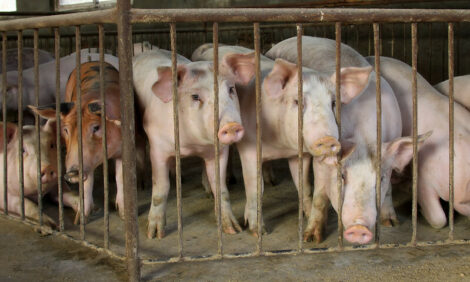



Pork Commentary: Hog Prices Rebound
CANADA - This weeks North American Pork Commentary from Jim Long.Iowa-Minnesota’s average lean price last Friday was 67.63¢ per pound, 3.5¢ per pound higher than a week prior. USDA marketing’s for last week came in at 1.902 million head about 70,000 more than the same week a year ago, but 4000 fewer than the previous weeks. Indeed lots of hogs are coming to market, but hog prices remain profitable, we estimate that many farrow to finish producers could be making $20-25 per head.
Expansion
USDA sow slaughter remains above a year ago. The University of Missouri’s slaughter and gilt count gives no indication of expansion. We see many plans for expansion but few have been completed yet. Until they are reality, there is no major expansion in place. We continue to believe hog prices will remain profitable until the summer of 2007 as do lean hog futures price quotes at the Chicago Mercantile Exchange. It takes almost a year from when gilt enters quarantine until its market hogs go to slaughter. (Arithmetic: 42 day quarantine + 115 day gestation + 180 day birth to market @ 265 pounds = 337 days) If the expansion isn’t in place now it’s hard to get significantly more hogs before the fall of 2007.
Triumph Plant
The Triumph Plant in St. Josephs Missouri is going to a second shift. Last fall the new Triumph Plant was not yet operational. This fall Triumph could be handling 16,000 head a day – 80,000-95,000 a week. More operational slaughter capacity this fall is positive for competitiveness between packers’s and will be supportive for hog prices.
Summer Heat
The heat in the summer slows down the growth of hogs. It contributes to seasonal infertility. Every year it is hot, this is not new. Slaughter weights decline. Over the last 3 weeks, 3 pounds per head. Weights usually continue to decline until mid August and then they start to climb usually peaking at the end of November or first part of December. Peak weekly slaughter numbers are usually in the November time period. We are filling finisher barns now with these feeder pigs. If the infrastructure is ever full of pigs, it is now. This in itself cuts demand for sew’s and feeder pigs. SEW prices according to the USDA last week were $24.50-$39.55 with an average of $32.38, 40 pound feeder pigs $32.00-$52.65 and $43.07 average.
Premium Standard Farms: Financial Results.
Premium Standard Farms, headquartered in Kansas City Mo., is the second largest hog producer (approximately 225,000 sows) and sixth largest pork processor in the US, with about 4300 employees at farms and plants in Missouri, North Carolina and Texas.
Last week we reviewed the challenges Maple Leaf Foods, Canada’s largest hog producer and meat company were being faced with and their action plan. It appears to us Premium Standard Farms (PSF) are facing some of the same issues.
For the quarter ending June 24, PSF’s net profit was $7.6 million, compared to a year before of 15.4 million. Sales for the quarter in 2006 were $206.5 which is down from last years $245.3 million.
John Meyer, President and Chief Executive Officer of PSF says, “We experienced a year over year decline in both our production and processing volume during the quarter relating to primary health issues. We continue to make enhancements to our processing and further production facilities. We are already seeing signs of improvement with the health issues that caused the declines in production volume, which we expect to see reflected in our results by the end of 2007“
Hog production is hard. Almost everything has to go right to get good results, disease that can cause production declines are part of the business and large mega producers are not immune to this reality. The challenge is as you get one problem under control such as PRRS, another such as PWMS jumps up and whacks you again. The people at PSF are trying as hard as they can, but if you look at their financial results it indicates the challenge to make money in our industry.
Some simple arithmetic; a $7.5 million profit for the quarter divided by 225,000 sow’s works out to an estimated $33.00 per sow net profit. Using a 4 hogs per sow marketed in the quarter, an $8.00 per head profit, including slaughter and processing returns. A profit yes, but not one that is going to stimulate expansion especially considering the costs associated with new buildings. This is a hard business and both Maple Leaf Foods and Premium Standard Farms are working hard to get it right. The challenges they both face are similar to other producers.
Possibly we have been overestimating profits in the industry and the main reason we have not seen expansion is profits have not been as good as we and others have estimated. When the largest hog producer in Canada ( Maple Leaf ) and second largest producer in the US (PSF) both talk of profitability issues it is hard not to ask the question. “How profitable is this business?“ Especially in a timeframe when lean hog prices and feed prices have been profit enhancing.
Written by Jim Long, Genesus Genetics / Keystone Pig Advancement Inc. - 10th August 2006 - Reproduced courtesy Farms.com
ThePigSite Newsdesk
please take the time to visit their website at
www.genesus.net .






